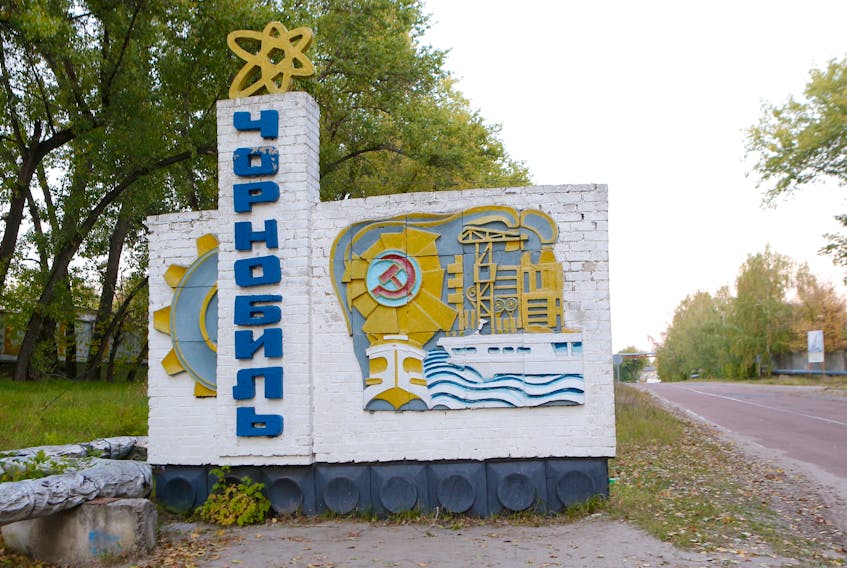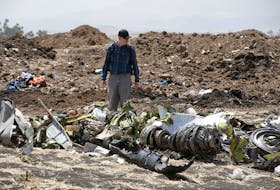On April 26, 1986, nuclear reactor no. 4 exploded at the Chernobyl Nuclear Power Plant in Ukraine during a botched safety test. The explosion — and the resulting fire that engulfed part of the plant — caused a massive amount of radioactive contamination to spread in the surrounding areas. Nearby communities, especially the city of Pripyat, had to be evacuated due to the contamination.
In an attempt to contain as much of the radioactive materials as possible, 600,000 workers from the USSR quickly began to build a large structure around the destroyed reactor, often without the necessary protective gear. Workers rushed to fill in open spaces with thousands of cubic metres of concrete, helicopters dropped debris directly into the reactor, and miners dug to prevent searing nuclear runoff from melting through the foundation of the base and into the ground below.
The entire section of the facility was covered by massive concrete walls — its ominous appearance gave it the nickname the “sarcophagus”.
In the end, the structure was able to prevent hundreds of tonnes of radioactive contaminants from getting out. Thirty-one people died of radiation poisoning during or after construction was completed.
The sarcophagus had to be set up as fast as possible — construction only took about five months — and was never built to last. LiveScience reports that the building lacks bolted joints, and openings in the roof have allowed water to seep in and corrode the structure. Now, more than 30 years after its construction, its collapse is imminent.
The Chernobyl disaster widely considered to be the worst nuclear disaster in history, and the nearby cities remain empty to this day. A 2012 UN report found there was widespread radioactive contamination in Ukraine, Russia, and Belarus that could have affected millions of people, and thousands of cancer diagnoses has been attributed to the contaminants.
SSE Chernobyl NPP, the company which runs the power plant, said in a statement that the probability of sarcophagus collapse is “very high” and the entire structure needs to be dismantled.
“The structures of Shelter built more than 30 years ago are simply supported and are kept on the supporting blocks only due to the force of gravity,” the statement said.
Any sort of collapse might bring the risk that more radioactive materials are released, so as contractors are planning to dismantle the sarcophagus, parts of it will need to be reinforced before being removed completely.
But dismantling the entombed nuclear reactor won’t mean that the plant will once again be exposed to the open air — an even bigger containment shell has already been put in place directly above it.
Called the “New Safe Confinement”, the $2.2 billion CAD project is a massive arched dome that was built to completely engulf and contain the reactor and its fragile shell. It was announced in 2007 and completed earlier this year. To avoid possible contamination, the 354-foot-high structure was built next to the reactor, and was wheeled over to fit over the site.
According to the European Bank for Reconstruction and Development, the NSC is the “largest moveable land-based structure ever built” and is expected to last 100 years.
The sarcophagus will be completely cordoned off from the outside world as cranes begin to dismantle its structure, which is expected to be completed by 2023.
Copyright Postmedia Network Inc., 2019









